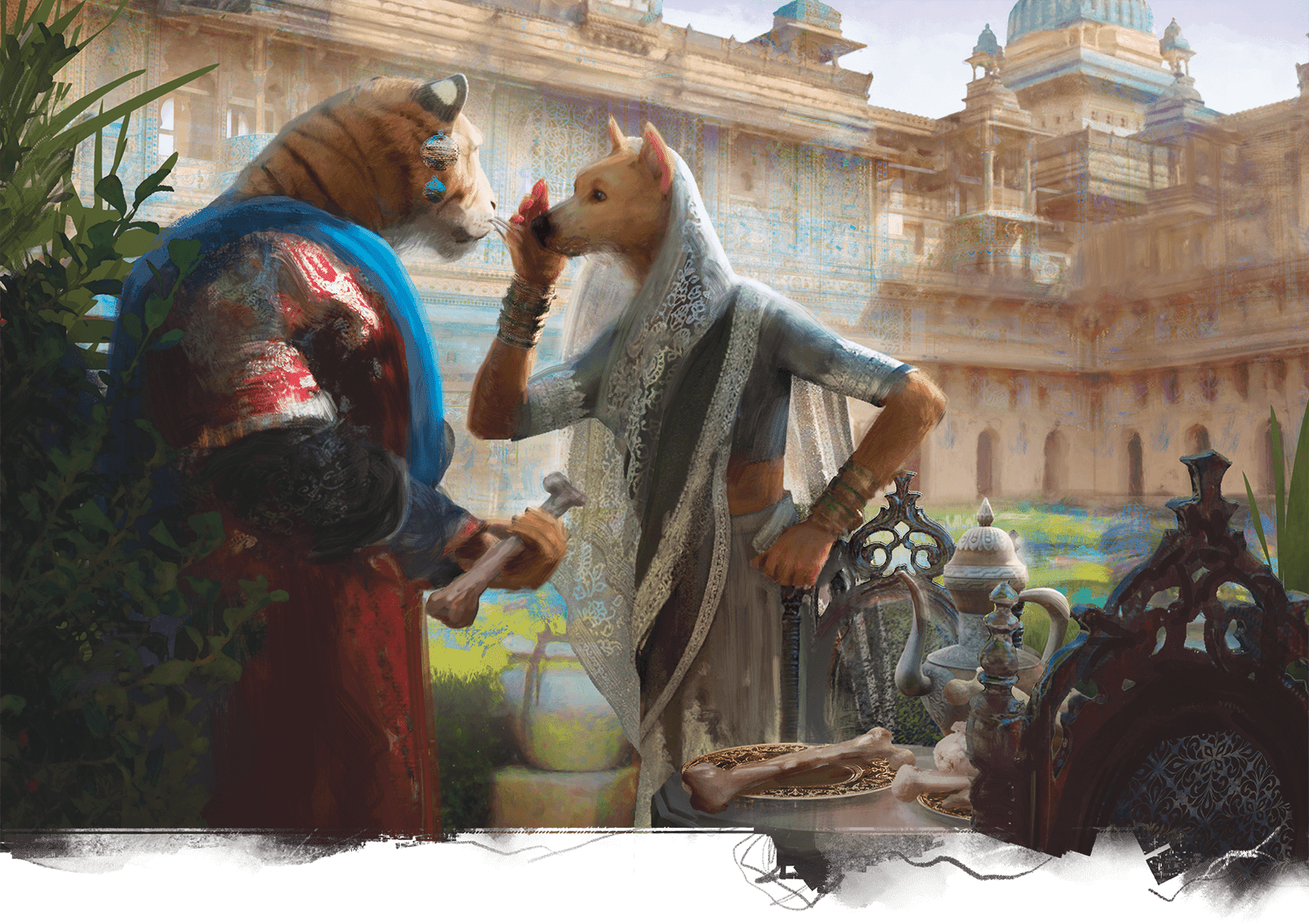Urriak Uruk
Gaming is fun, and fun is for everyone
I'm not American!
Canadian. Which funny enough on Wikipedia, apparently 17.7% is Asian (which is including East Asian of course).
I'm not American!
Hence the shallowness, and trying to use Gnosticism and Neoplatonism without even making an attempt to model the big medieval religions that were most suffused with those concepts?The Forgotten Realms takes most of it's Theological Influences mixing Neoplatonism and Gnostism theologies with Hinduism, most Christians influences are insolated to specific dieties, and church structures, skin deep combined with elements of thoughtforms.
Even D&D Angels have Neoplatonist, Gnostic, and Hindu influences.

Pointed, satirical, and a thoroughly justified question.Sort of like if you don't have Jesus, what's the point of a European-inspired setting?
Sort of like if you don't have Jesus, what's the point of a European-inspired setting?
Hinduism also isn't the only religion in South Asia.Christianity is not the only religion in Europe.
That's for sure. I spent six months there while in college, where I learned even Hinduism itself is hard to define as a single religion sometimes: there are so many different versions of it, and the different versions are grounded in geographic location much more than in philosophical/theological differences. It is not analogous to the different denominations of Christianity.Hinduism also isn't the only religion in South Asia.
Maybe yes, maybe no.That's for sure. I spent six months there while in college, where I learned even Hinduism itself is hard to define as a single religion sometimes: there are so many different versions of it, and the different versions are grounded in geographic location much more than in philosophical/theological differences. It is not analogous to the different denominations of Christianity.
Me too, but not lifetime: I'm an adult convert.Maybe yes, maybe no.
I’m a lifetime Roman Catholic
All true, and also truly controversial among theologians (their fights, I mean, over when something is a denomination versus a heresy versus a whole new religion). The difference I noticed in Indian Hinduism back in the 90s was that different versions of it were just so different from the main lines, yet no Hindu I met ever had any great quarrel with that. It was a more thoroughly eclectic religion than yours and mine.who has taken not only courses on our theology, but also college-level religion courses. Finding out there’s over 30k different denominations of Christianity- including those that do not believe in the triune nature of God- was eye opening. Things some branches consider heresies are central tenets of others.
yeah thats always been a bugbear for me too, caste system and fate of untouchables is constantly highlighted for India but serfdom (which persisted in parts of Europe up to 1900) is largely ignored and certainly never highlighted as relevant to pcs.The vast majority of western-influenced D&D settings blithely ignore the institutions of serfdom, pogroms, class immobility, feudal obligations, indentured servitude, child marriage etc. Not sure why it's at all important that an Indian-influenced setting includes coverage of the caste system, or a samurai-influenced setting detail the cheapness of non-samurai life when 'conventional' settings that riff heavily off western medieval/renaissance imagery casually edit out the unpleasant or un-fun-to-game-with historical bits.
I like the use of renown/favour to represent relationships between social classes. My influence system (level+cha) requires that pcs with negative influence must ally with a higher influence PC (as a servant/slave) etc but can earn influence like any other.This is probably been posted elsewhere on this thread, but maybe we should all just read Ajit George's article on how he built some Ravenloft domains, partly inspired by India. It's a great case study for any cultural adaptation, but is especially relevant to this thread.

Ajit George: The Beautiful Challenge of Bringing India to D&D’s Ravenloft
Writing for Van Richten’s Guide to Ravenloft was one of the most exhilarating and daunting game writing experiences of my life. I am the first writer of Indian origin to write Indian-inspired mater…terribleminds.com
